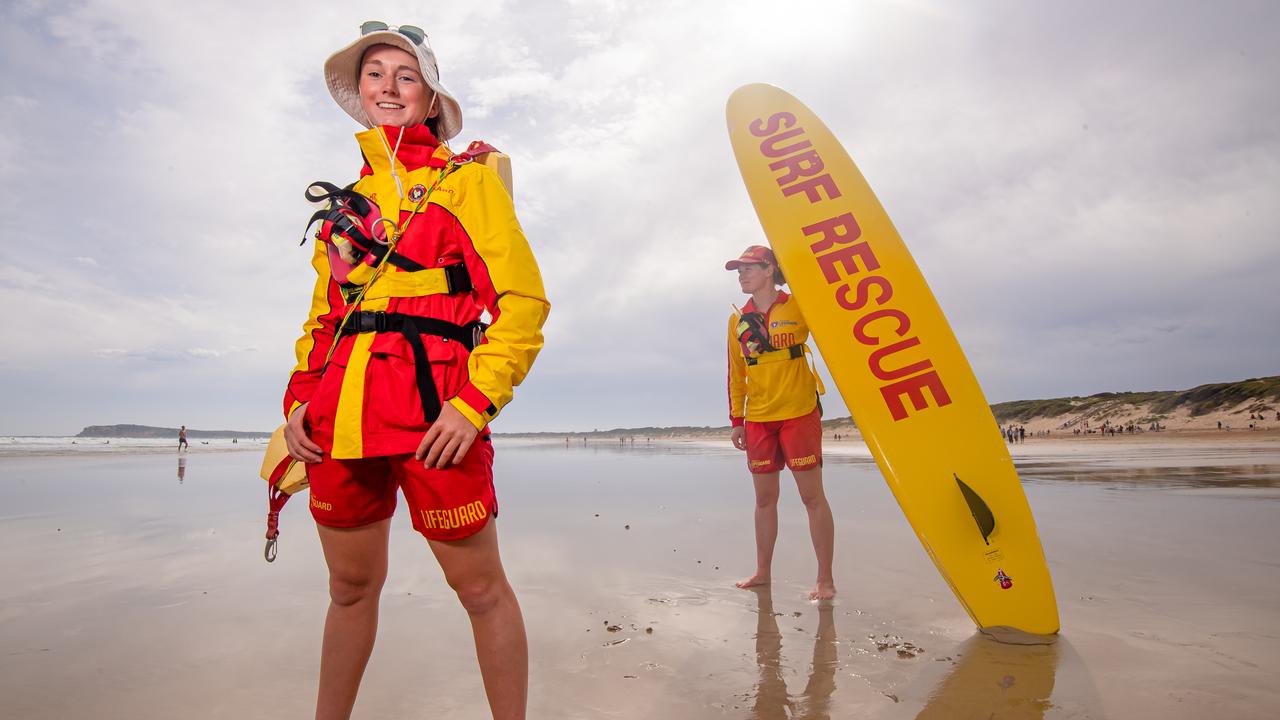How lifesavers are keeping our beaches safe this summer
Three people too many have already drowned this summer. Here’s how these lifesaving heroes are keeping our beaches safe.

Izzy Greer’s eyes don’t leave the sea in front of her as she stands on Ocean Grove beach.
There is a lot to see — children playing in the waves, people stretched out sunbaking on the sand, families running around.
But what Ms Greer is looking for is danger.
“You never know what might happen. It’s so unpredictable — something could change in a second,” she said.
That something usually involves someone’s life or wellbeing, and it is the job of Ms Greer and hundreds of others like her who patrol Victoria’s beaches to protect them.
On Wednesday, the Herald Sun joined lifeguards at Ocean Grove for what is for them a typical summer’s day patrol.

Elsewhere in the state, news spread of how dangerous our waterways can be as the three people drowned and five others were taken to hospital after a horror day.
Ms Greer, who at 21 is Victoria’s youngest chief lifeguard, said it was safest to swim at controlled beaches.
“One of the great things about Australia is we are so lucky with so many nice beaches, but there are some that are safer than others,” she said.
“One of the things that has emerged this summer is with people wanting to be outside, a lot of people are looking for their own location to swim.”
At Ocean Grove the jetski services patrol from the water, and Ms Greer liaises with them and the patrol tower on her radio.
“We’ve upscaled that service because of more people being out and it increases our capacity to respond to incidents.”
That means getting to someone in need quicker.

“If something is happening halfway between patrolled areas they can respond. It also means if we have a major incident on a beach with just two lifeguards, they can call in the jetskis and they can continue to watch the patrolled area while [the lifeguards] respond to the incident.”
A major incident is anything that requires an ambulance to be called or someone taken to hospital.
“It’s major first aid … a suspected spinal injury and things like that.”
On Wednesday, a surfer was badly cut by his surfboard and that required a quick response, she said.
But for a busy day, it was thankfully quiet.
“You never know if it is going to be busy, it’s just part of being a lifeguard,” Ms Greer said.
Risk management is a critical part of a lifeguard’s role.
“Lifeguarding now is about being proactive and talking to people before they get into the water … so we don’t have any rescues. It’s a much better day if we don’t have any rescues and we have taken steps to prevent anything tragic happening,” she said.


“Like the numbers of beachgoers, major incidents were rising.”
“This year we have done the most rescues we ever have done, across the state. I know that is also reflected in the Geelong area.”
The skill of swimmers varied by beach. At Ocean Grove, people were more confident than beaches around Geelong.
“So the number of rescues are accordingly higher,” Ms Greer said.
Before this summer, swimming schools feared Victorians who had been locked down most of the year had missed crucial lessons.
“I think that’s a valid concern, even people’s fitness in general. At beaches, like Eastern beach which has a real mixed demographic who may not be regular beachgoers — their perception of their own ability might not be accurate.”
Parents leaving their children at the beach unattended had also risen.
“We’ve had a lot more lost children this year. If you come to the beach you should always swim with someone but make sure you are accountable all the time for the people you come with — the job of a lifeguard is to manage the whole beach, not each individual.”
Victoria’s beaches have seen some of the biggest crowds in years.


“It’s been a pretty busy summer, considering the weather we have had. On the whole, I guess it has been a busier summer because everyone is looking to meet up outside and the beach is the perfect place to do that.”
The behaviour of beachgoers had been generally good.
“We just encourage people to swim between the flags, that is always the safest place to swim. I think people respect that message.”




